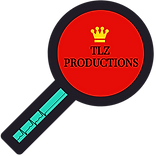

TLZ PRODUCTIONS G324
I was assigned the role as Cinematographer of our group, whereby my role essentially was to ensure that the visuals and shots used within our short film aided our genre and presented our storyline in a clear way. I worked closely alongside my group members in order to achieve the most successful shots to help us. Also, my role mainly consisted of me having greater knowledge of camera shots and my way around the camera, in order to convey the appropriate emotions for our film. An example of this would be the use of extreme and medium close ups, to highlight the current emotions of both Kyle and Olivia and understanding that utilizing various different shots places a different emotion upon each moment captured. From previously being the cinematographer for my AS media production group, I had the basic knowledge of my way around the camera and how to capture certain emotions from characters, however this year my ability has been challenged continuously by pushing my knowledge of the camera and independently practicing how to use the camera and use a more varied number of shots then my previous work from AS.
Before beginning the process of filming, I took it upon myself to read over the script with our production group’s director, Tamia Mullaney-Downer, to understand what shots would be effective for our film and how the emotions each shot would evoke within our audience. After planning out these shots with the director. It was also vital before beginning the filming process, that I also took into account the generic, codes and conventions for films within our gene (drama), for example; understanding the use significant use of extreme/medium close ups to convey certain emotions from the actors and to also to evoke certain emotions from the audience.
When beginning our filming process, we firstly begin with the CANON 700D due to the large capacity of others within the class using these cameras, however from experience with this camera, I understood that this camera takes longer to set up and focus the lens, which was a very time-consuming job. Therefore, when bringing the equipment back the following week, we decided to use the CANON 70D; this was also because after using the CANON 700D within the previous year and practising with the CANON 70D, I felt that the visuals were more crisper and captured small details that were significant within our film. It was a much easier process of setting up and making sure the camera was in focus or the lighting didn’t negatively effect our filming process. the camera and using it. Also as the cinematographer, I felt that within filming it was key that our actors knew of the shots that would be used to support how they may position themselves within the frame and how to convey their emotions within one close up or medium 2 shot. It was important that throughout the filming process, that each shot captured was taken more than once. This effectively enabled the editor (Zafir Choudhury), to be able to choose the crisper shots and a choose from a wider range of different shots with the same dialogue and from the same scene. Furthermore, adding in a variety of different shots into the same scene, highlights the level of advanced cinematography and editing.
Even though taking multiple shots of the same scene was a tedious process, it made the filming process easier as we wouldn’t need to refill any footage again.
When filming, it was also highly significant that both the director and I worked closely in gaining the best footage possible for our film. When beginning filming it was crucial that after every shot both the director and I watched over the raw footage to understand what improvements needed to be made and how to convey the actor’s emotions within a better light. However, this process was hardly used due to the Director and I planning the shots, which would be used within each scene ahead of the filming process. Our film incorporated various different shots, which weren’t used within my previous AS production, which highlighted the mass amount of progression with my greater knowledge of how to utilize the camera in order to gain a successful outcome. This was also further explored by my confidence to be creative with my camera shots, whereby I placed the camera within different angles in order to gain a more appropriate shot to aid how a certain moment was captured and understood by the audience, for example for one shot used within the film, I positioned myself behind an vanity and mirror to capture our actress Olivia Lizzmore writing her letter and looking towards the mirror to herself, this shot came with great difficulty, however I felt that using a shot like this was essential in order to gain an successful outcome for the visuals.
Taking on the role as the cinematographer enabled me to take ownership and independence in my creativity and vision for the outcome of the film, and how it would be presented to our audience. My confidence when using the camera has significantly increased, due to a greater understanding of the camera and what type of shots would be significantly effective for this film production.
Overall, my experience as the cinematographer for our group and production has challenged me to produce effective shots for our film and also enabled me to work closely with my other group members in order to collectively produce the appropriate content needed to conform to the codes and conventions of how film’s genre – drama.
By Leila Monfared
Cinematographer's Journal


